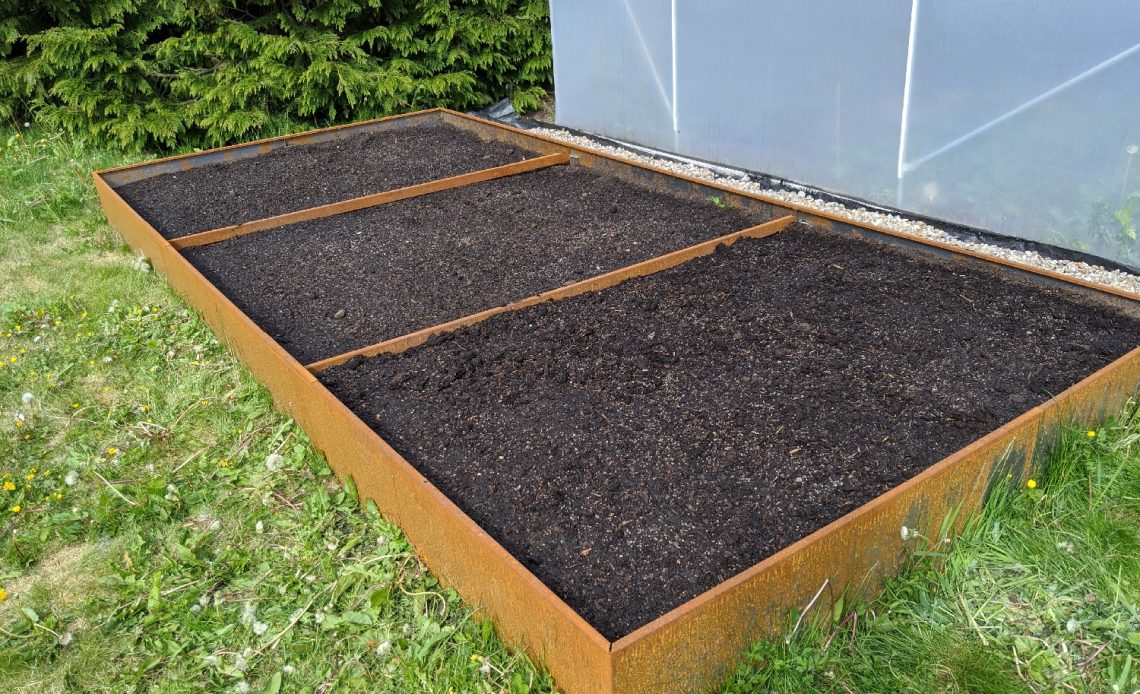

We’re here to help! Wild Yards is a completely free website that is 100% dedicated to helping you create a wildlife-friendly, sustainable yard. Read more
WildYards is reader-supported. When you buy a product through a link on our site, we may earn a comission. Every product is independently selected by our (obsessive) editors and our reviews are unbiased and objective. Read more about our mission or our privacy policy.
A raised bed is a fantastic way to elevate your flowers, vegetables, and legumes – and can be super-easy to maintain! But, do you know what to put on the bottom of a raised garden bed for optimum growth?
Card, paper, burlap, stones, and leaves make fantastic raised bedding. Some materials are eco-friendly, others help to keep pests at bay – while others provide fantastic drainage. To get the benefit out of rich, raised soil, it’s worth protecting it with a medium to line it with.
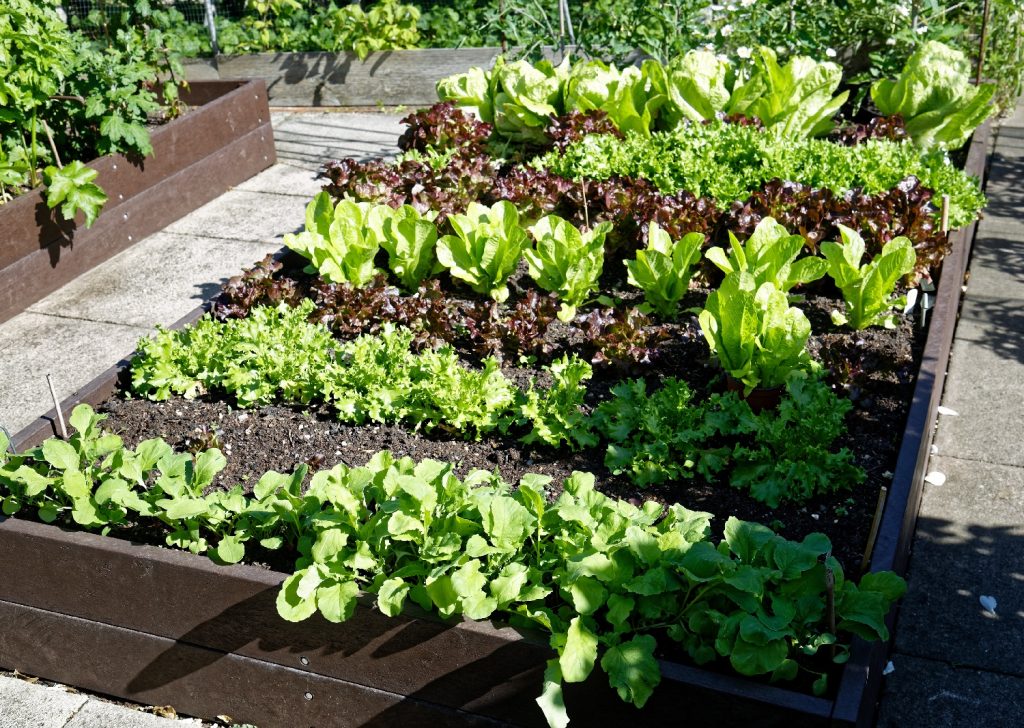
Why should I line the bottom of my raised garden bed?
It’s reasonable to want to avoid lining your raised bed at all, but you’re likely to benefit from healthier plants and more nutritious soil if you take the time to find the right material. Here are just a few quick benefits to keep in mind.
You’ll enhance your soil drainage
Letting your soil dry out completely or get mushed into a soggy mess could spell disaster for sensitive plants and crops. By lining out the bottom of your raised bed with an effective medium, you can easily balance your raised bed soil layers from getting too moist or too arid. The soil in raised beds is at the highest risk of drying out, which can kill your plants if you don’t water them enough.
You’ll stop attracting destructive pests
While a raised garden bed alone won’t stop insects from attacking your plants, you can at least prevent small mammals from burrowing with an effective lining option. Some materials work better than others here – tougher fabric and compacted stones, for example, are more likely to ward off mice, groundhogs, voles, and rats than soft paper or cardboard.
You’ll curb weed growth
Weeds are tricky enough to get rid of at the best of times – and by lining the bottom of your raised bed with the suitable material, you can ensure no unexpected growths spring up to choke the plants you actually want to grow. Softer material is great at stopping unwanted weeds from making an entrance, and it’s all the more worthwhile if you’ve spent time making nutritious compost.
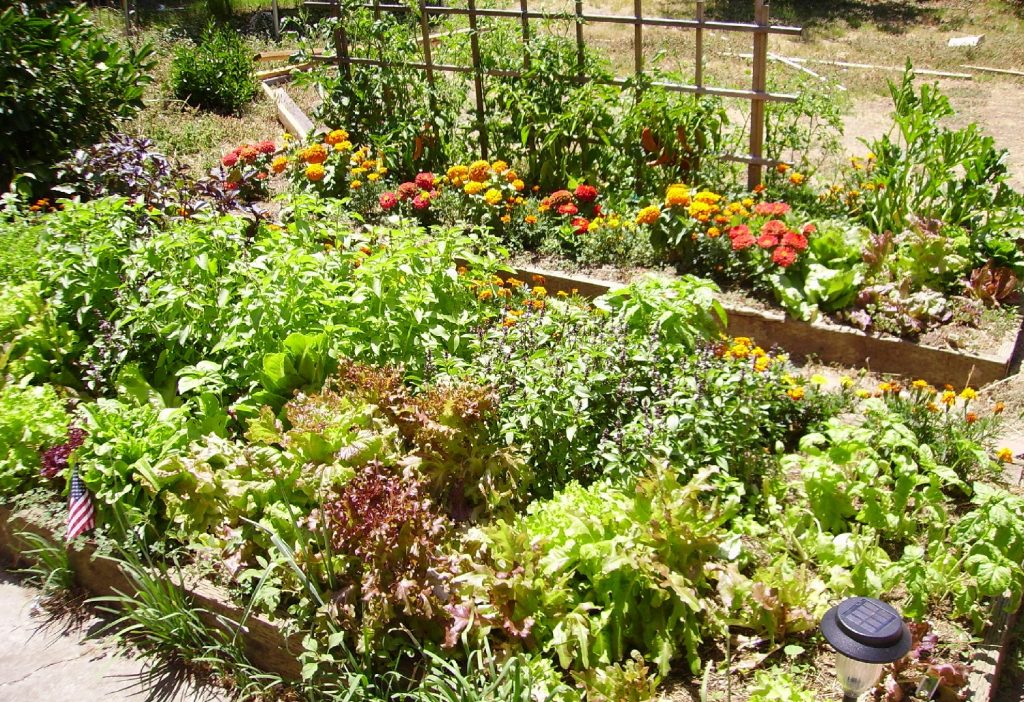
You’ll encourage nutritious soil for months to come
While it’s sometimes worth replacing topsoil, ensuring your raised bed is fully lined can help to keep your growth medium nutritious – as it continues to decompose. Not all lining material will decompose, so unless you wish to continue adding compost to your bed(s), it’s worth letting your soil take care of itself.
You’ll keep your soil healthy
Soil is always at risk of contamination from chemicals and external debris, but if you line your raised bed effectively, you’ll prevent unwanted toxins from soaking into your medium.
Practical lining can help to balance your soil temperature, ensuring your plants grow healthier and stronger for longer. It also means you can protect cold-sensitive plants from frost and heat-sensitive plants from wilting in the sun.
You’ll reduce the soil you use
If you’re working with a particularly tall or deep bed, you may not wish to fill the whole unit with soil or compost. In this case, lining material carefully compacted at the bottom of your bed will help reduce the work needed (and compost used, if you wish to spread it more evenly elsewhere).
You’ll reduce soil wastage
As well as keeping your soil draining clearly, lining a raised bed can also prevent you from losing any soil you add. This is particularly the case with more robust linings, meaning you may not expect the same rigidity and protection with soft mulch or newspaper.
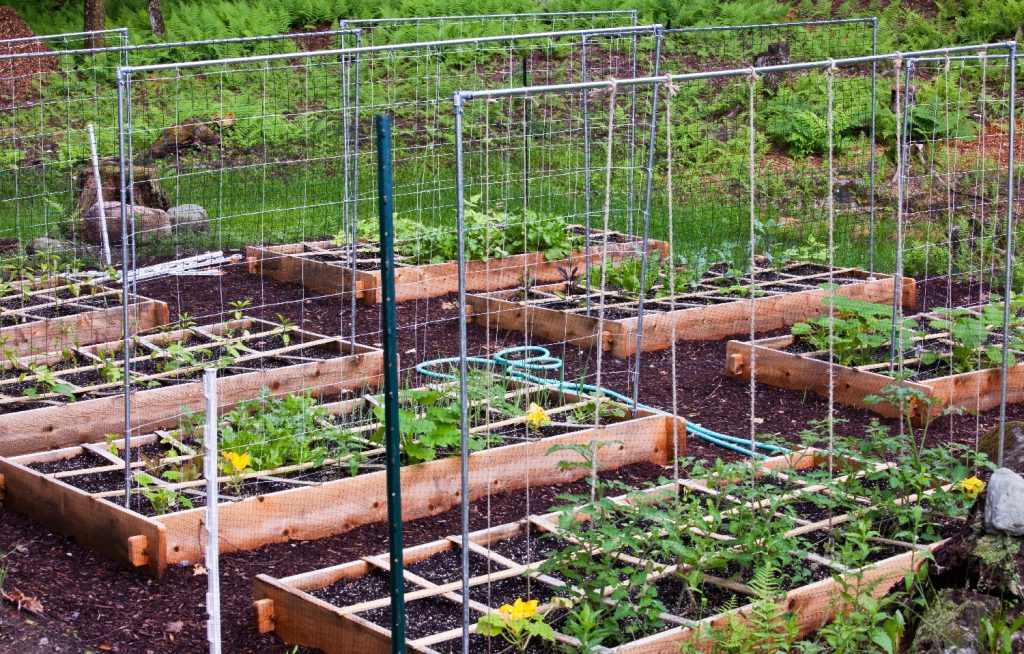
Why might lining a raised garden bed not be a good idea?
Lining your raised bed comes with a few risks, such as potential damage you may cause when digging or turning the soil with tools. What’s more, when it comes to replacing your liner outright, you’ll need to temporarily lift out and store your soil while you swap out – plan for extra labor.
It’s worth considering what you’d like to grow in your raised bed – plants and vegetables with long, splaying roots, such as alliums, may not benefit from some linings, as they can restrict growth and spread. Conversely, some linings may help certain vegetables and plants to grow stronger.
When you install a raised bed liner, think carefully about worms – while a tough liner will keep out annoying weeds, it may also prevent helpful creatures from burrowing up and keeping your soil nutritious. While there are plenty of bad worms in your garden soil, most earthworm species are fantastic for aeration and decomposition. If you’re lining a bed on a dirt patch where weed growth is unlikely, you’re safer to consider a lighter option.
Do also budget carefully for your lining – depending on the type of lining your plants will benefit from most, you may need to invest considerable money just to get started. Some cost-effective mulching and lining options can work well – but do have drawbacks for specific growth demands.
Raised garden bed lining options you’ll want to consider
Once you’ve decided whether or not raised bed lining is right for your plants and crops, it’s time to choose the best fit. Here are eight options that work best.
Cardboard
Cardboard is one of the most budget-friendly lining choices, and it’s ideal if you want your liner to decompose into the soil. This thick mulch can take up to six months to fully degrade on average – though the thicker your cardboard, the longer it will take for your lining to decompose. This, at least, means you won’t have to change your lining out too often.
Thick cardboard with multiple layers will help to keep your soil well-fed as it decomposes while ensuring your soil drains well. Cardboard is also highly effective at restricting weed growth. If you’re worried about your soil getting too moist, add in some straw as an extra layer to soak up the dampness.
The thicker the cardboard, the better – but try using rough, non-printed cardboard if you can. You never know what inks and chemicals have been used on your kids’ cereal boxes, so be sure to find everyday cardboard at your local store or recycling centers.
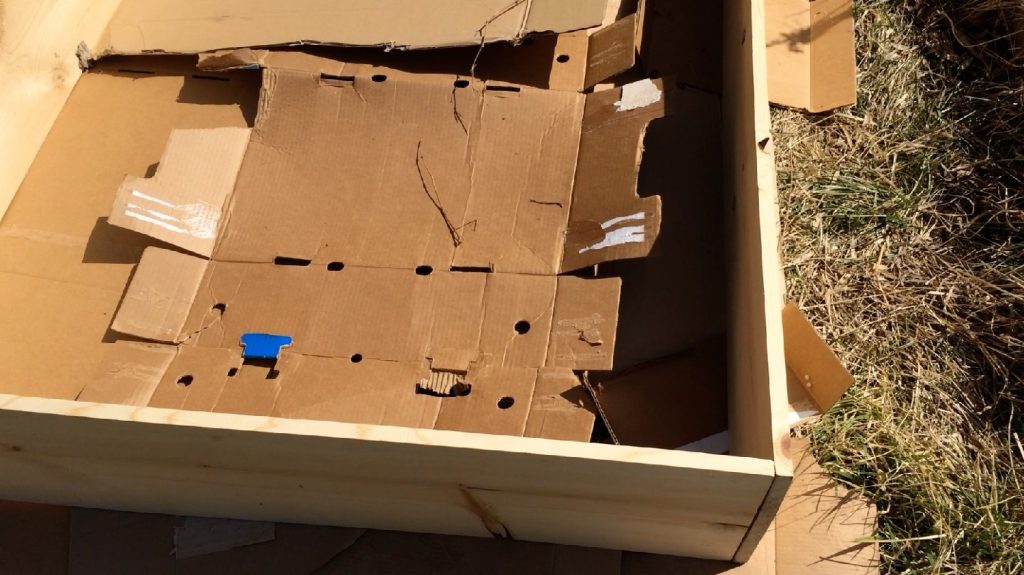
Newspaper
Newspaper, alongside cardboard, is a popular bed lining choice as it’s both abundant and amazingly cheap. Like cardboard, newspaper is great at preventing weeds from rising and interrupting your raised bed, and at the same time, it should drain fairly clearly. As with cardboard, adding around three inches of straw may help to lower moisture should this become a major concern.
Newspaper loses out to cardboard in strength, but it decomposes a little faster as it’s not as robust. This does mean you’ll need to replace your lining in the short term, albeit with the benefit of your soil getting added nutrients during decomposition. If you want to protect your lining and avoid having to change it out too often, simply add as many layers as possible.
Unlike cardboard, you won’t have to worry about newspaper ink – modern printing is biodegradable, and your soil won’t suffer.
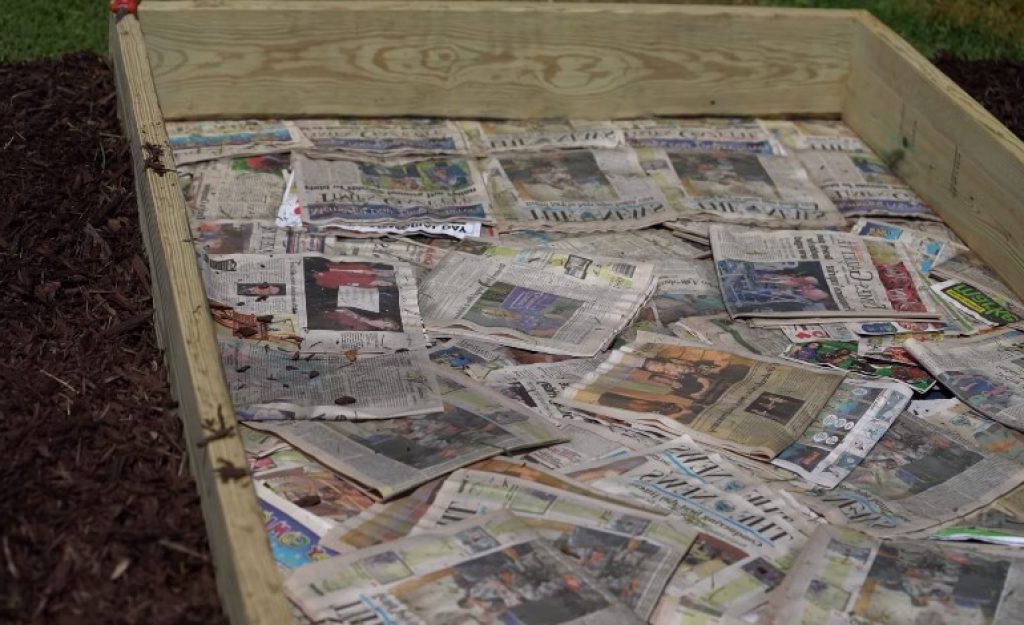
Leaves
Leaves are perhaps the best ‘free’ lining option as they will naturally decompose and can help to keep weeds out of your bed. An added benefit of filling your bed with fall rakings is that they will take longer to degrade than newspaper, on average. You may expect a leaf-based liner to withstand up to a year of use. The fresher the leaves you line with, the longer they’ll last – it may be prudent to start building your raised bed towards the end of the growing season.
The more leaves you pack in and condense, the better protected you will be against fast decomposition. Add in the soil after you fill up your bed to allow it to clump in. This slower decomposition will also allow more nutrients to seep into your soil during the growing season.
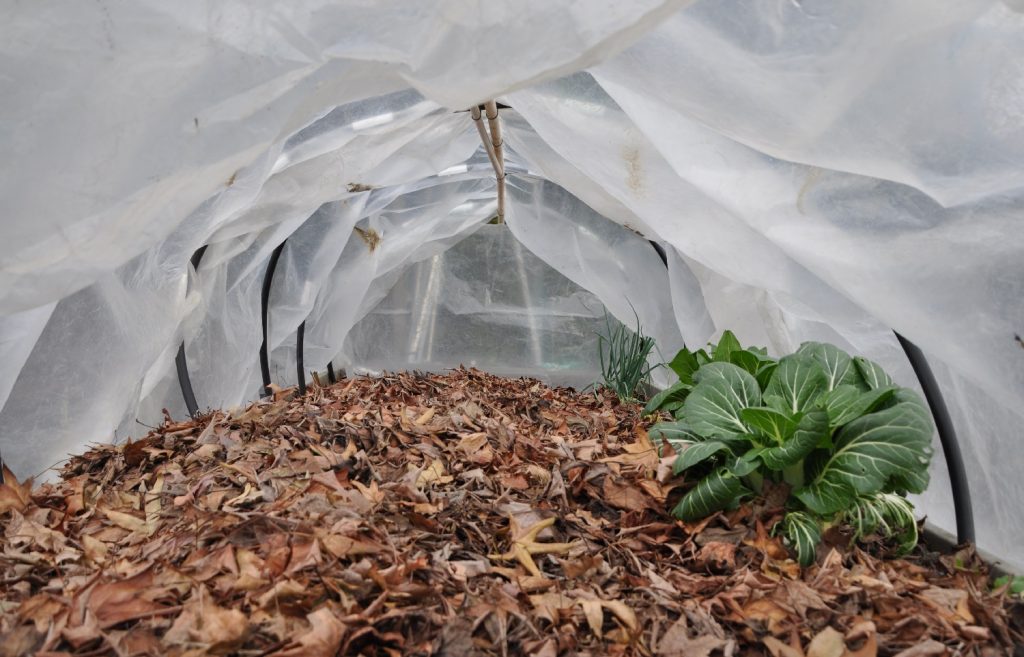
Straw
If you grow plants that require a lot of moisture, straw is ideal for locking in water – it’s also great for topping up flimsier lining choices. Straw will also help add carbon into your soil, helping to keep it nutritious for various crops.
Straw lining will decompose fairly swiftly, similarly to newspaper and card – and there’s an added risk of seeds arriving in any you buy in bulk. You’ll need to carefully sift through your bales before adding to a base. It’s also crucial to source organic straw – as some providers may sell bales without considering pesticide interaction.
Using straw as a raised bed liner means you’ll need to add to it a little each year to prevent it from losing form.
To a similar end, you may consider using grass – though this is likely to decompose quicker, and if you use an oil mower to trim your lawn, you’re at risk of transferring this over to your bed.
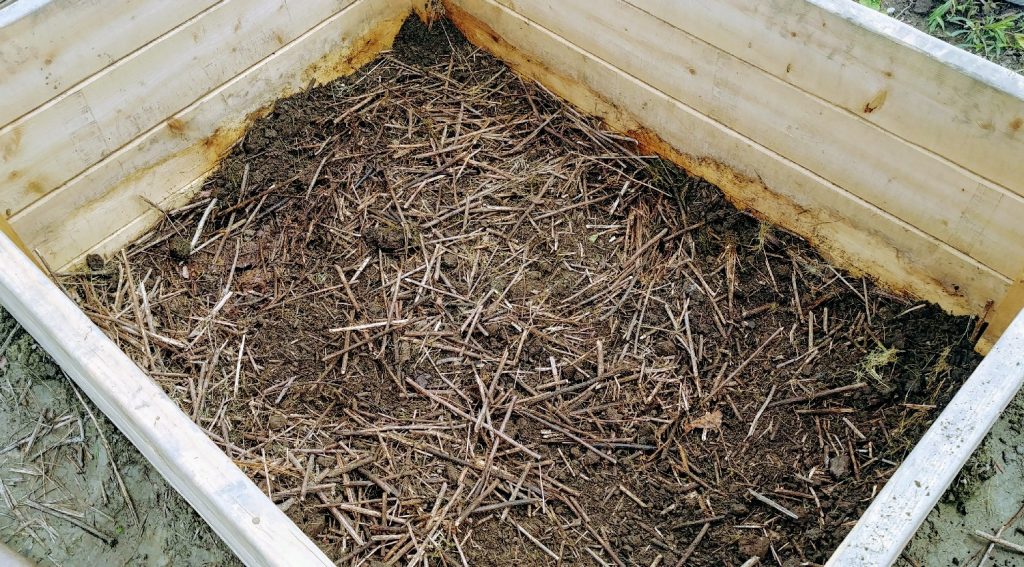
Hardware cloth / fabric
Providing it’s not made of plastic, hardware cloth – made of mesh – may be useful in preventing pests such as gophers and moles from digging through to your crops. This is one of the longest-lasting lining options, too – it should provide you with years of protection.
Potential drawbacks include the fact some weeds are resistant to its protection. It’s also more expensive than sourcing leaves or newspaper. Alternatively, if you have the money to invest, hardware fabric is a great option teamed up with weed-restricting mulch such as cardboard.
Hardware cloth is recommended as a raised bed liner if you already suffer from digging mammals tearing up your crops. Otherwise, it may be more prudent to look for a balanced choice.
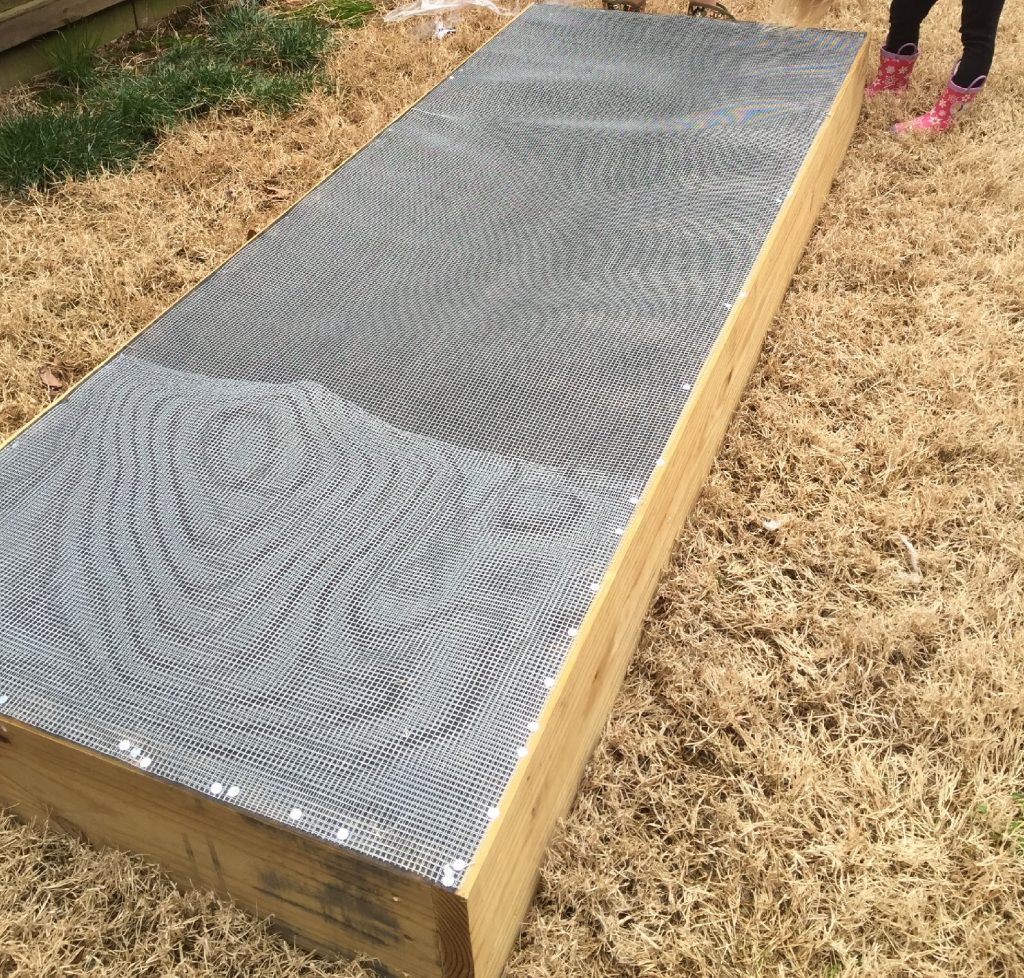
Stones
Rocks and stones are recommended if you want to balance the drainage in your raised bed, but you must be careful with how dense you make your layer. Used effectively, you can ensure water runs clear. Use too many stones or rocks, and you’ll risk your soil getting too damp.
The added benefit to using stones or pebbles as bed linings is that they’ll take centuries to decompose – unless you need to add or remove stones, you shouldn’t need to move the soil out.
If you’re looking for weed protection as a priority, stones may not be your best option – plants can still easily grow up through gaps between rocks. To avoid this, consider using small pebbles or stones wherever possible. Be prepared to invest in many stones to ensure your bed is fully covered.
Alternatively, broken brick and slab may also work in the place of stone – with similar effects.
Burlap
If the idea of hardware cloth doesn’t appeal to you, burlap is a decomposing alternative that should weather a few years of protection. This lining tends to be the most eco-friendly choice, as it’s made from plant fibers – you’re recycling dead plants to grow new ones!
Burlap can be fairly messy and unravel, which may degrade quicker. Conversely, it’s one of the best materials you can use for draining water, and it should offer reasonable protection against weed growth.
Woodchip
Woodchip, or any kind of wood shaving, acts great as a weed inhibitor in a raised garden, providing you source it from an organic provider. Wood can take years to decompose depending on thickness, and when layered thickly, will help to lock in water to keep your soil moist.
Wood decomposition can encourage useful bacteria to emerge in your soil, thus adding to its nutrition over time. Like straw, woodchip is ideal as a lining booster for softer mulch such as newspaper.
A word of warning – woodchip lining should be used sparingly, as it can change the pH of your soil – making it uninhabitable for some plants. Wood can also reduce nitrogen in growth mediums, too – and you’ll need as much of this as possible for stronger yields.
You should avoid treated or polished wood at all costs – as you risk letting harmful chemicals drain into the soil, destroying your hard-growing work. If you’re going to use wood at all, choose raw materials fresh from the tree or the timber mill, and never use any furniture you’re breaking down from inside the home.
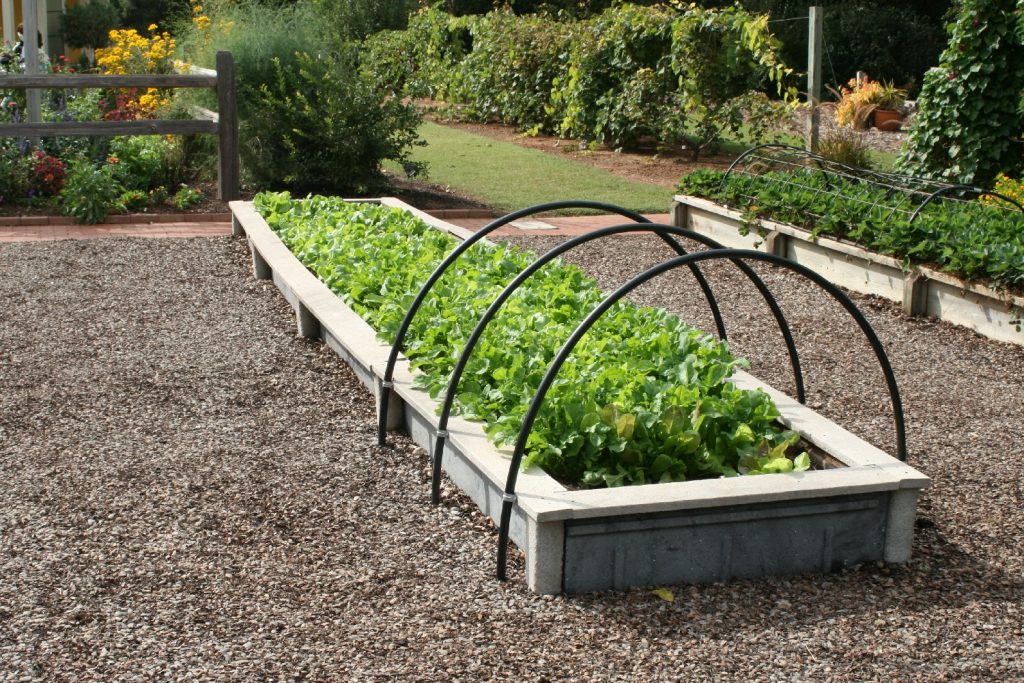
Bed lining options that don’t always work great
The risks far outweigh the benefits for all the following bed liners may work well in certain circumstances. Use the following options with caution.
Plastic
Plastic lining can effectively keep toxins out of your soil, and it’ll inhibit weeds from getting into your bed. But, it’s never a good choice if you want to balance the moisture and drainage in your soil. Plastic often lets water pool rather than drain, and there’s a risk of the wooden base of your bed rotting over time. At most, you may wish to line the sides of your bed with plastic – but nothing further.
Plastic isn’t biodegradable and can restrict oxygen from getting to your soil and roots within. All considered, there are more effective ways to stop your soil from soaking up toxins.
Similarly, don’t use plastic trash bags or similar – keeping this material out of the soil and local environment is a quick, easy way to do your bit for the planet!
Carpeting
Modern carpeting may contain plastic, which leads to many of the same problems listed above – water will pool and create dampness and rot. It may be beneficial to use organic carpet if you can source it – if you want to fight against weeds while still letting roots take anchor. Using any carpet, however, runs a huge risk of vegetable crops losing nutrition and oxygen.
Do I really need to line the bottom of my raised garden bed?
If your raised bed is at ground level, you may wish to cut and fix weed membrane to the bottom – otherwise, make sure to aerate and turn your soil to prepare it for planting. The same rule applies if your bed’s around five inches tall or shorter – there’s no need for a lining.
Using no lining is the best option if you want to reduce cost and if your plants are aggressive growers requiring lots of root space. Conversely, using an appropriate lining can help you grow stronger, healthier plants for longer periods – particularly if you choose a biodegradable option.
Not using a lining puts your plot at serious risk of a mammal attack – if you know your vegetables are likely to get gobbled up by gophers, always fix a lining.
Can I change my raised bed lining?
Yes – for example, you may change the plants you grow in your bed, meaning you may need to change your soil mixture. It’s also recommended you change your raised bed lining regularly if you use material such as newspaper or cardboard, as it will biodegrade in the short term.
When choosing the perfect bottom lining for your raised garden bed, be sure to consider the needs of your plants – and how practical it will be to maintain for seasons to come. Look for a lining that holds back weeds, protects your crops from pests and lets water drain just enough for your plants’ specific needs!
